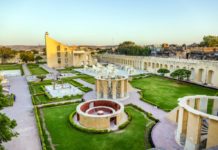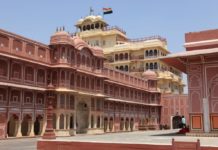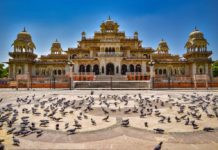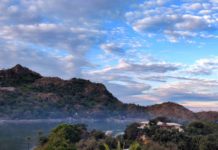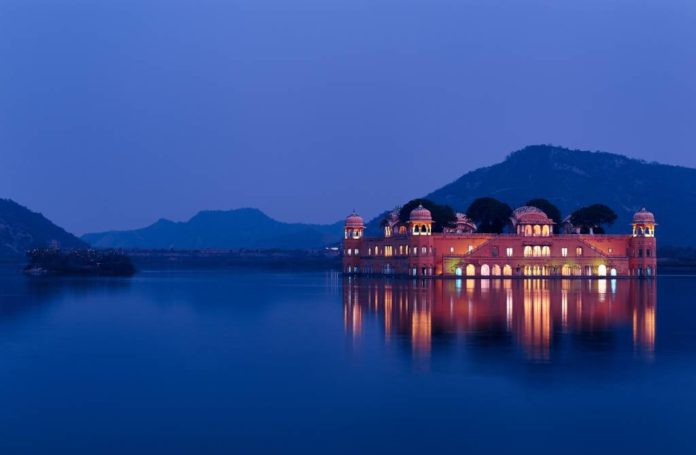
Surrounded by Nahargarh hills and floating in solitary in the middle of Man Sagar Lake, Jal Mahal (Water Palace) is a scenic, architectural marvel of the bewitching Rajputi kingdom. The palace was constructed for the sole purpose of serving as a hunting lodge for Maharaja Madho Singh. However, it’s serene and poised beauty along with the exceptional fusion of Mughal and Rajputi craftsmanship turned it into a preeminent tourist attraction in the city of Jaipur.
The Jal Mahal or the Water Palace is a five-story building. However, only the top floor of the palace is visible and accessible, as the remaining four storeys stand submerged under the water of Man Sagar Lake.
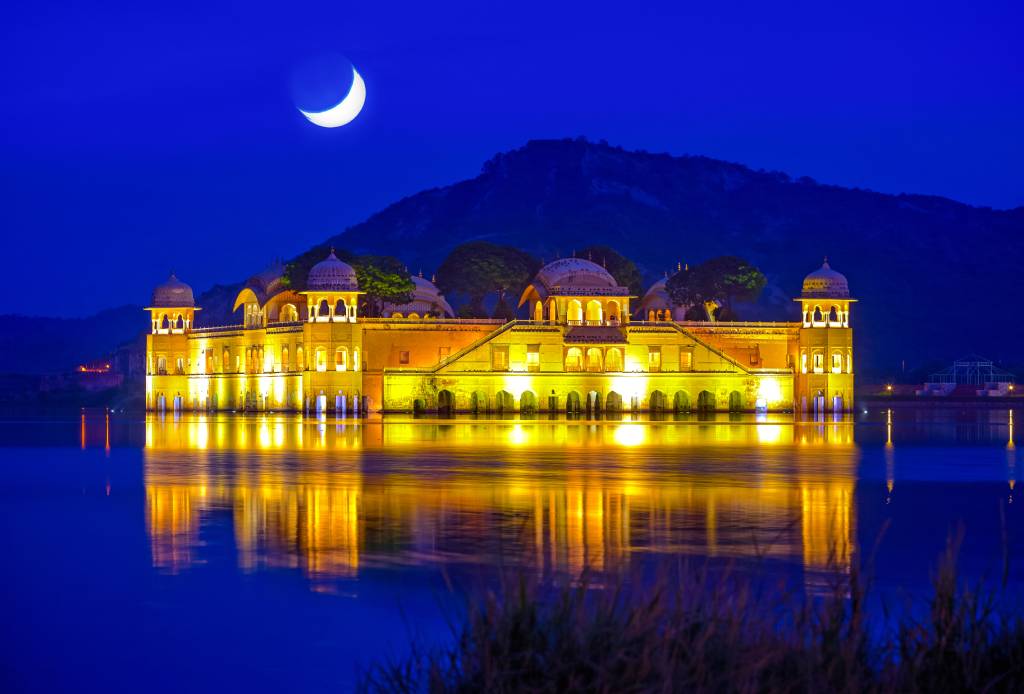
The History and Rejuvenation of Jal Mahal
- When translated in English “Jal Mahal” means “Water Palace”, but it was never intended to be a palace or a place to live for the royal family.
- There is by far no clear recorded history about who built the complex and when.
- It is popularly believed to be constructed by Maharaja Madho Singh in the 1750s to serve as a royal hunting lodge for his duck hunting parties.
- Later, in the 18th century, new courtyard grounds were added, and minor exterior upliftments were made to the complex building by Maharaja Madho Singh II to embellish its aesthetic beauty.
- Since then, the building suffered a substantial deterioration due to the seepage of lake water into the walls and waterlogging issues until the 21st century.
- After years of neglect and carelessness, in 2004, the Rajasthan Tourism Development Corporation finally paid attention to the fading historic masterpiece and decided to restore the monument to its authentic splendour.
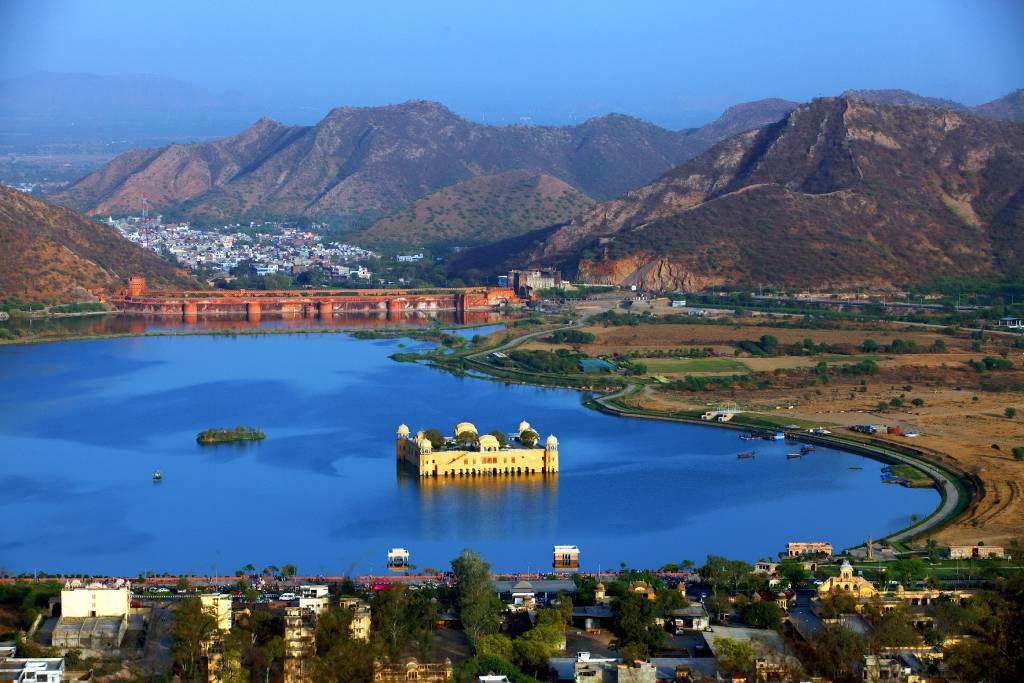
Activities to Engage in at Jal Mahal
Unfortunately, as of now, visitors are prohibited from entering the Jal Mahal building as it is a protected historical monument under the Rajasthan Lake Development Authority. In spite of that, it is worth your while if you are a first-time visitor. You can still enjoy the tranquil beauty and the juxtaposition of the palace building from the lakeshore and indulge in various other activities.
- Relish the Magnificent Landscape through a Camel’s Eye View: As soon as you reach the Man Sagar Lake, you’ll find various cameleers who will take you on a camel ride along the lakeshore for a panoramic view of the palace. Try negotiating with the cameleers to end up with a better deal.
- Boating in Man Sagar Lake: If you’re interested in taking a better look at the palace, you can buy tickets for a boat ride across Man Sagar Lake which will take you relatively up close to the palace building.
- Relish the State’s Golden Sunset: If you visit Jal Mahal during the evening, you would be just in time to witness one of the most soothing sunsets. Take a spot at the lakeshore garden and watch the sun slowly gliding down behind the Nahargarh Hills, with a golden sun glitter illuminating parts of the palace building.
- Shop at the Local Stalls: You can buy snacks or handicraft articles and clothing from local stalls across the Man Sagar Lake.
How to Reach Jal Mahal?
Jal Mahal is located on the outskirts, between the Jaipur city and Amer Fort. It is a 10 to 15 minutes drive from both Amber Fort and Jaipur’s top tourist destinations such as Hawa Mahal, City Palace, and Jantar Mantar.
The best and fastest way to reach Jal Mahal is to hire a cab or a private taxi from the city that will drive you to the location without any hassle.
Best Time to Pay a Visit
Although the palace is visible all year round, it is best to visit it during or immediately after the monsoon, i.e., July to September, when the water level is high, and the dense clouds in the sky add up to the scenery. You might get to see some of the lower floors of the complex if you visit earlier during the year.
Nearby Attractions
- Amer Palace: One of the most glorious palaces in India, Amer Palace is crowned on top of the Aravali Hills, just 4 kilometres away from the Jal Mahal. Also known as Amer Fort, it was constructed by Maharaja Madho Singh I in the year 1592 and served as the main headquarters of the Rajput rulers. Embellished with pink and yellow sandstones, this magnificent building is eminent for its serpentine staircases and maze-like passages. It will take you nearly two to three hours to explore the complex in detail.
- City Palace, Jaipur: Spruced up with a fusion of Rajputi, Mughal and European architecture, the City Palace of Jaipur served and is still presently serving as the residence of Jaipur’s royal family. The palace complex is an amalgamation of various buildings, museums, courtyards, and galleries that illustrates the staggering royalty of the Rajputi kingdom. It is a 10 minutes drive from Jal Mahal towards the city and takes about an hour or two to explore.
- Hawa Mahal: Six kilometres away from Jal Mahal, this honeycomb-shaped structure was built in 1799 as an extension of the City Palace for the Rajputi royal women who strictly practised “Pardha” system at the time. It enabled them to relish the royal processions on the street without being seen.

